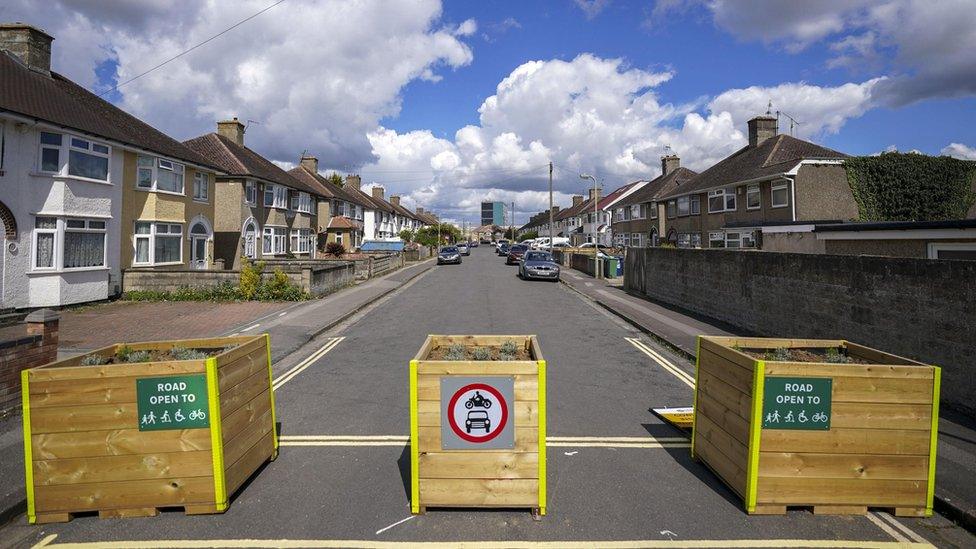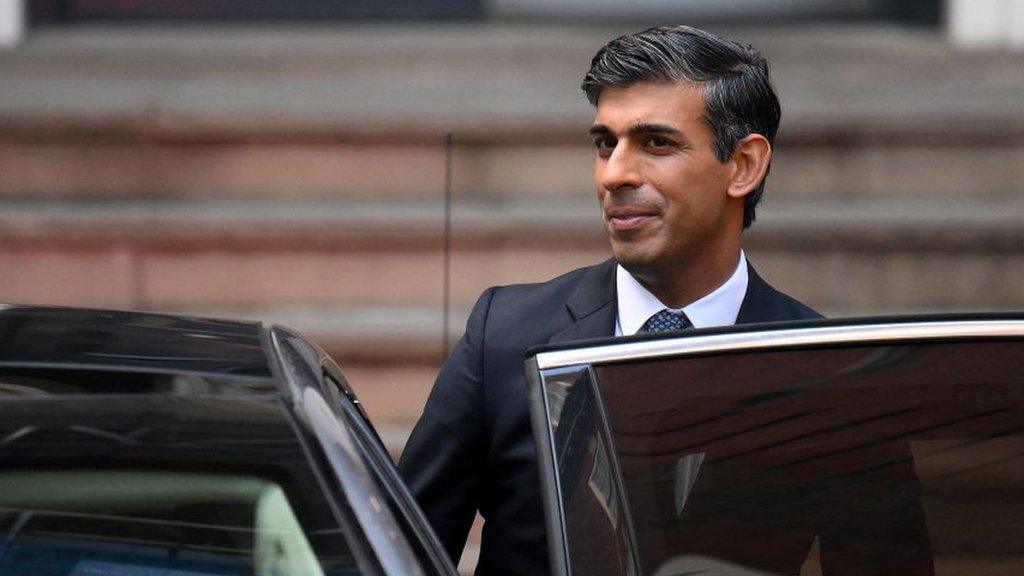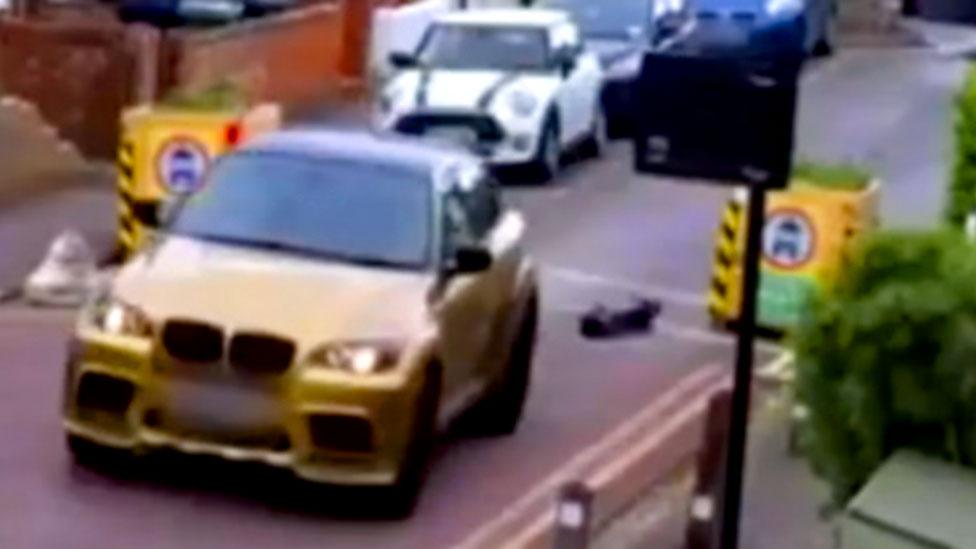LTNs: Councils told to consider residents' views under new guidance
- Published

Councils will have to consider local residents' views before introducing new low traffic neighbourhoods (LTNs) under new government guidance.
LTNs aim to reduce motor traffic in residential areas by restricting their use as through routes.
The proposals say councils in England should be confident schemes have the support of most of the community.
Labour accused ministers of trying to "dictate to local communities how they use their streets".
The draft statutory guidance, published by the Department for Transport and due to come into force this summer, recommends councils carry out leaflet drops, run online surveys and hold in-person meetings when considering introducing LTNs.
As well as local residents, businesses and emergency services will also need to approve of the move.
LTNs often use signs as well as physical obstacles like bollards or planters to prevent traffic being able to drive along a certain route. Some areas use automatic number plate recognition cameras and may issue fines to people who drive down those roads without an exemption.
They are intended to prioritise other road users, like cyclists and pedestrians.
The review found they could provide benefits like improved air quality but raised concerns about the impact on residents with disabilities, as well as the risk of delaying emergency service vehicles.
The report also found that local authorities operating LTNs issue an average of 36,459 Penalty Charge Notices per scheme - with one scheme exceeding 170,000 fines.
A review showed that only 13% of residents have responded to council planning consultations on LTNs and 18% feel their views have influenced council decisions.
Failing to be confident of local support could affect future transport funding, under the new guidance.
Councils are separately being told they should only introduce 20mph limits in specific areas, for example outside schools.
Transport Secretary Mark Harper said the proposals were "sensible suggestions" that would be "welcomed" across the country.
"I think there are places where councils haven't taken people with them. There are examples during the pandemic when there was no consultation. Things were driven through for ideological reasons," he said on the BBC's Sunday with Laura Kuenssberg programme.
"I think what we're proposing is very sensible and if councils listen to our guidance that will be fine.
"If they don't we'll have to think about other measures about funding and things like that in the future."
Transport Secretary Mark Harper said it showed the government was "on the side of drivers".
"We want local people to have their voices heard, and any traffic schemes to have the consent of those they impact," he said.
"Well thought-out schemes, like 20mph limits outside schools, can make our roads safer, but we are raising the bar to help ensure all traffic schemes work for everyone in the community."
The Local Government Association said: "Low traffic neighbourhoods are popular as they reduce traffic, making neighbourhoods safer by encouraging more people to walk, wheel or cycle and can improve air quality.
"Councils already consult with all residents and businesses to find the best solutions to ease congestion and improve air quality for everyone."
Louise Haigh MP, Labour's shadow transport secretary, said the publication of the guidance was "a blatant and desperate attempt to distract people from a government that has run out of road".
"All this ongoing Conservative chaos has a real cost for working people and our public services," she said, adding that Labour would "act on the real priorities of drivers by tackling soaring car insurance costs and the traffic clogging up our roads".
The measures are part of the government's Plan for Drivers.
Related topics
- Published30 July 2023

- Published17 April 2023
